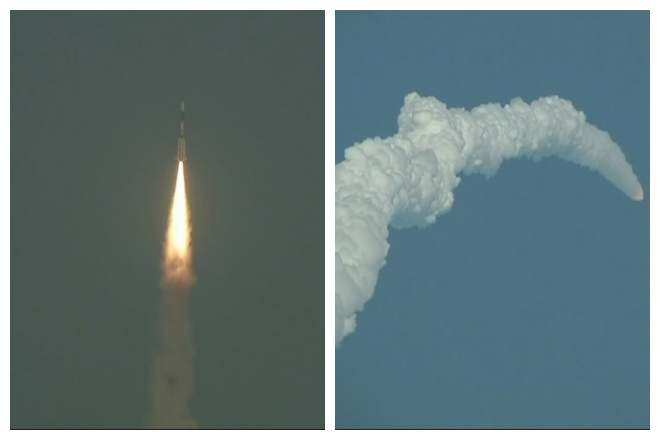In yet another big achievement, India’s most powerful, home-made communications satellite GSAT 6A has been launched from Sriharikota by the scientists of Indian space agency ISRO. The heavyweight GSLV rocket was used to carry the GSAT 6A. The 2066 kg satellite, which cost around Rs. 270 crore will be able to send and receive signals from hand-held devices. The satellite is expected to be heavily used by security forces which are stationed in the remotest areas of the country.
WATCH VIDEO|
#WATCH: ISRO’s launches GSLV-F08 carrying the #GSAT6A communication satellite from Satish Dhawan Space Centre (SDSC) in Sriharikota, Andhra Pradesh. pic.twitter.com/m7qum0DnkA
— ANI (@ANI) March 29, 2018
The launch of GSLV-Fo8 has marked the 12th flight of Geosynchronous Satellite Launch Vehicle GSLV-F08 and sixth flight with indigenous Cryogenic upper stage. GSAT 6A is similar to GSAT-6, a high power S-band communication satellite built on I-2K satellite bus with a mission life of about ten years, it said.
A key feature of the satellite is providing mobile communication to India through multibeam coverage facility.
The satellite will also provide a platform for developing technologies such as demonstration of 6 m S-Band Unfurlable Antenna, handheld ground terminals and network management techniques that could be useful in satellite-based mobile communication applications.
GSLV-F08, weighing 415.6 tonnes with a height of 49.1 meters comes with notable improvements like induction of High Thrust Vikas Engine, electromechanical actuation system in place of electro-hydraulic actuation system.
Around 400 scientists and engineers were called in to help with the launch at the Satish Dhawan Space Center, located on the coast near Chennai. The GSLV rocket which will carry up the communications satellite has been dubbed the “Naughty Boy” by ISRO scientists. The rocket has had a patchy record, with four of its 11 flights ending in failure.
The Vikas engine will be used in the second stage to give the rocket a higher thrust. In future, the Vikas engine may become the mainstay of Indian rockets and could even be deployed when India hoists the Chandrayaan-2 mission.









